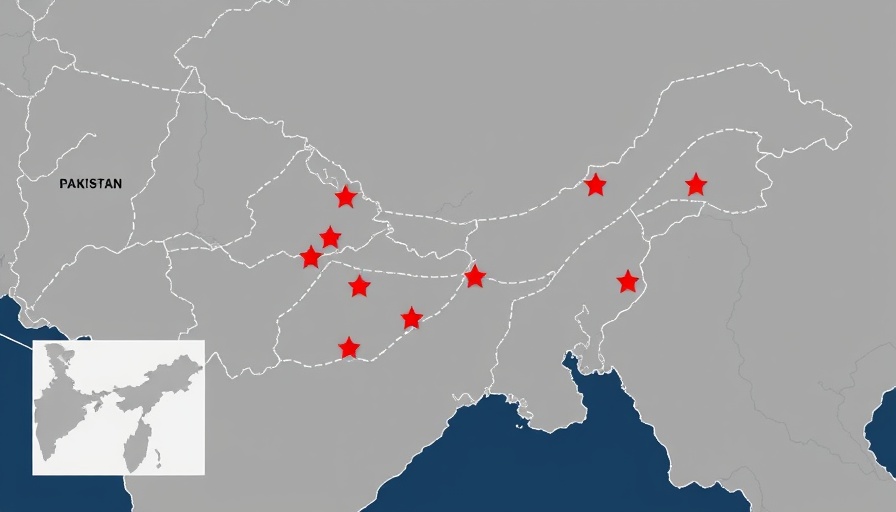
Escalating Tensions: A Dangerous Conflict Unfolds
As the conflict between India and Pakistan enters its third night, the stakes have never been higher for the region, particularly for the people living along the contested borders. The violence escalated dramatically as both nations accused one another of launching attacks that extended well beyond the already contentious Kashmir region.
A Descent Into Chaos: Ground Reports
On the evening of May 9, 2025, reports surfaced from both nations detailing extensive shelling and cross-border incursions. India has been defending itself against what it describes as heavy drone incursions into its northern territories, while Pakistan has denounced Indian artillery fire as a violation of their peace agreements.
In areas within India-controlled Kashmir, the impact of the ongoing conflict is painfully visible — civilians are scrambling to evacuate, with many homes destroyed under the barrages. Eyewitness accounts from the region depict frightened families fleeing their neighborhoods, seeking safety amid the chaos that threatens to engulf them.
The Human Toll: Civilians Caught in the Crossfire
The civilian casualties are deeply concerning. Both governments reported that innocent bystanders have suffered from the relentless assaults. This ongoing cycle of violence raises critical questions about the safety and future of residents in these disputed territories.
In places like Muzaffarabad, Pakistani citizens have taken to the streets, shouting slogans and protesting against perceived Indian aggression. Conversely, rallies were held in India with citizens expressing staunch support for their military efforts, showcasing the deep divisions and escalating nationalism in both nations.
The Broader Implications: A Nuclear Standoff
This conflict stands as a reminder of the fragility of peace in a region heavily militarized since both countries became nuclear powers. The potential for escalation remains a serious concern among international observers who fear that any miscalculated move could trigger wider repercussions, impacting not just South Asia but the global community.
Historically, the Kashmir conflict has been the nucleus of Indo-Pakistani strife, leading to multiple wars and ongoing tensions. The latest skirmishes further complicate efforts for a peaceful resolution, as negotiations become increasingly difficult amidst a backdrop of mutual distrust.
Seeking Peace: A Fragile Hope
Amidst the violence, diplomatic channels remain open, though their success is uncertain. Leaders from both nations have periodically called for calm and dialogue, but each escalation in violence has made these efforts seem more and more distant.
Understanding the psyche of the conflicted regions reveals a populace fatigued by war yet yearning for peace. Many Kashmiris, caught between the whims of their governments and the reality of the battlefield, long for stability and safety.
Looking Forward: Future Predictions and Hope
The current situation presents an opportunity for both nations to reassess their strategies. Continued military escalations could lead to isolation in the international community, potentially prompting both governments to consider a more diplomatic resolution to their long-standing feud.
As stakeholders in the global community, it is crucial for the rest of the world to engage both India and Pakistan in discussions that could lead to lasting peace. The voices of civilians must be amplified, emphasizing that their cries for peace should outweigh nationalistic fervor.
Conclusion: The Need for a Lasting Peace
As this conflict unfolds, it serves as a grim reminder of the urgent need for sustained diplomatic efforts and advocacy for the rights of civilians caught in the crossfire. Global leaders and the international community must come together to facilitate dialogue and support peaceful initiatives. Only then can the tragic cycle of violence potentially give way to understanding and coexistence.
 Add Row
Add Row  Add
Add 




 Add Row
Add Row  Add
Add 

Write A Comment